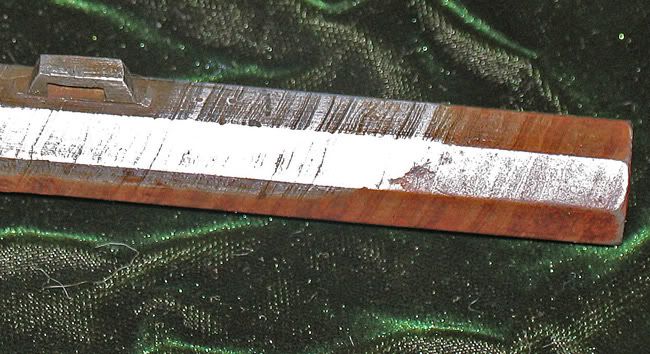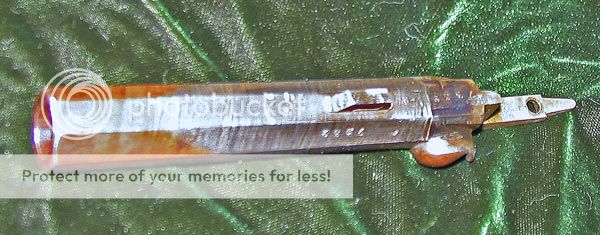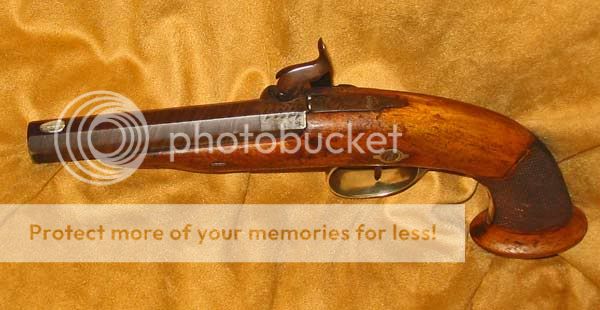At todays gunshow, I felt a tug which took me over to a table which had a demascus barreled pistol. (Some of you know the feeling of that tug. Can't explain it to folks who never felt it, but I swear it's real.)
I'm not usually into buying antques but the pistol seemed to be in pretty good condition and had engraved German Silver furniture. .
What's more, the price was right (after a brief haggle, ie "Hay, there's no ramrod, I cant' pay you that much for a gun without a ramrod!" "Ok, $5 off?" "How about $25 off?" "Deal!!".)
I believe it is from Belgium. The markings on the barrel include a oval with the letters L L G (or C) in it. On the other side of the barrel is a capital W or a capital sigma.
The barrel is demascus in very good condition. It is 5 inches long including about 3/4 inch of breech plug.
The bore is a rusty .530 with 12 very shallow rifleing grooves (ancient microgroove?:: ). The breech is a "patent" design. This breech block has a small rear sight cast into it. There is no front sight.
The stock wood is not Walnut, but is very close grained. It looks stained and appears to have it's original varnish in most places. There are several cracks in the wood, but I think if I fill them with Epoxy or Super Glue they will not split further.
The pistol looks like this:
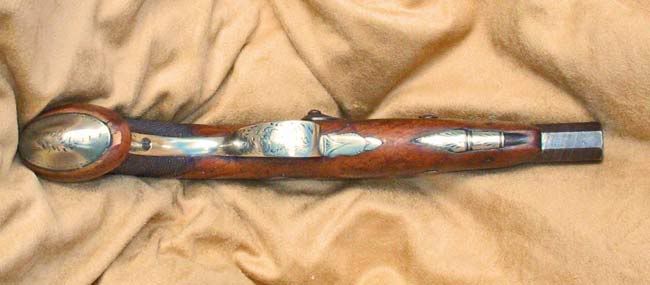
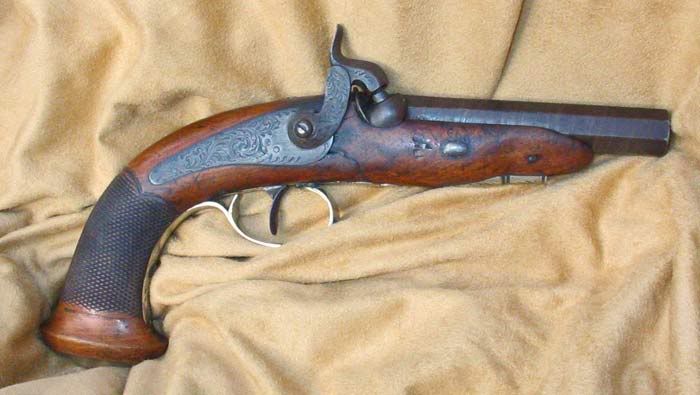
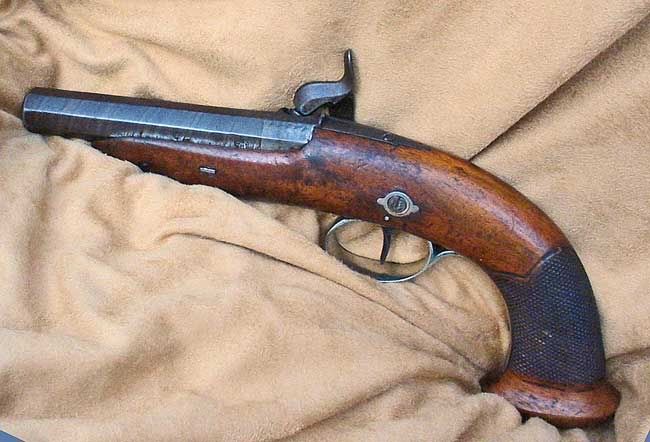
(The German Silver wasn't this shiny when I bought it. I spent the better part of 3 hours on it before I took the pictures)
It appears to be shootable except for the nipple threads.
There's enough threads there to tighten the nipple, but not enough of them left to shoot with safety.
I think I will buy several of Dixie Gun Co's oversize nipples (.270 dia?) and use one or two of them to rethread the hole. Then use the remaining one to install on the gun for shooting ::
Does anyone have any ideas about where/when this gun was made, or any history about it?
I'm not usually into buying antques but the pistol seemed to be in pretty good condition and had engraved German Silver furniture. .
What's more, the price was right (after a brief haggle, ie "Hay, there's no ramrod, I cant' pay you that much for a gun without a ramrod!" "Ok, $5 off?" "How about $25 off?" "Deal!!".)
I believe it is from Belgium. The markings on the barrel include a oval with the letters L L G (or C) in it. On the other side of the barrel is a capital W or a capital sigma.
The barrel is demascus in very good condition. It is 5 inches long including about 3/4 inch of breech plug.
The bore is a rusty .530 with 12 very shallow rifleing grooves (ancient microgroove?:: ). The breech is a "patent" design. This breech block has a small rear sight cast into it. There is no front sight.
The stock wood is not Walnut, but is very close grained. It looks stained and appears to have it's original varnish in most places. There are several cracks in the wood, but I think if I fill them with Epoxy or Super Glue they will not split further.
The pistol looks like this:



(The German Silver wasn't this shiny when I bought it. I spent the better part of 3 hours on it before I took the pictures)
It appears to be shootable except for the nipple threads.
There's enough threads there to tighten the nipple, but not enough of them left to shoot with safety.
I think I will buy several of Dixie Gun Co's oversize nipples (.270 dia?) and use one or two of them to rethread the hole. Then use the remaining one to install on the gun for shooting ::
Does anyone have any ideas about where/when this gun was made, or any history about it?





